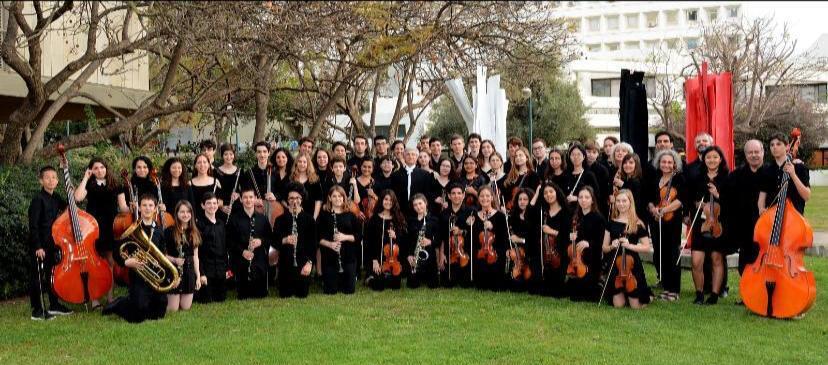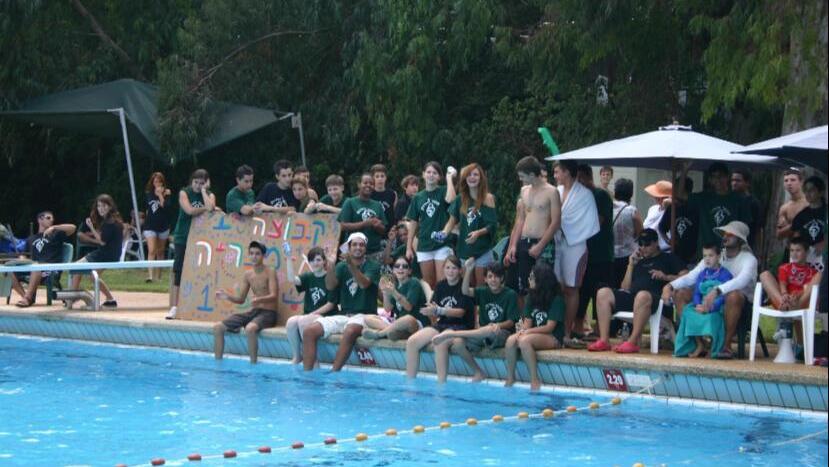In its 70 years Hakfar Hayarok , which served mainly as an agricultural boarding school, has known ups and downs. In the 1980s, it even ran into a crisis that could have threatened its very existence. The number of its students had shrunk and its reputation as an educational institution had deteriorated.
In the early 2000s Hakfar Hayarok was revolutionized. In 2001, there were only about 300 students in the high school, most of them boarding school students who were not eligible for a matriculation certificate.
By comparison, today, along with about 500 boarding school students and about 180 international school students who also study in boarding school conditions, another 2,000 external students are educated at the six-year school.
The demand for places for external students well exceeds the capacity, because Hakfar Hayarok is now considered a school of excellence offering a wide range of unique study tracks, and each of its students graduates with a matriculation certificate; many with a very high quality certificate.
Moreover, Hakfar Hayaroks students are leaders in Israel and around the world in many and varied fields such as: cyber, robotics, start-up, science, arts, chess, extreme navigation and more.
Existential crisis
Hakfar Hayarok was established in the early 1950s as an agricultural boarding school designed to be an alternative home for teens in need. Education in the youth village placed an emphasis on agricultural work, a rich social life and the development of independent life accompanied by the creation of active frameworks managed by the youth themselves. For example, the work foreman was a student elected by his peers through the process of free elections.
Since the 1980s, the status of agricultural youth villages in Israel has declined. The declining stature of agriculture and of the concept of the cooperative economy, along with the economic and social grounding of many families who no longer needed to send their children to out-of-home education, made the youth villages less attractive.
Hakfar Hayarok boarding school began to take in at risk youth, many of them new immigrants, mainly from the former USSR and Ethiopia. This composition of the student population naturally affected academic achievement. Only a small percent of students was eligible to take the matriculation exams.
By the end of the 1990s, the average number of Hakfar Hayarok students was only 350 to 400. Many of them did not come of their own initiative but following recruitment campaigns initiated by the school management.
During these years, its very existence was also endangered, due to its attractive location which included extensive agricultural land in one of the most expensive real estate areas in Israel - the border between North Tel Aviv and Ramat Hasharon.
Radical changes
In 2001, Dr. Kobi Naveh (Cisco) took over as CEO of the Green Village. There was nobody who knew the educational institution better than he did. As someone who had been educated in Hakfar Hayarok and continued to live and work on the campus for most of his life- first as a counselor and later as a teacher and boarding school director- he recognized the inherent potential. Now that the reins were in his hands, he decided to realize that potential.
At its foundation, the change was a significant revolution centered on the idea of creating social integration combined with academic excellence.
The intent was to create an excellence-oriented educational system that would be offered to external students, and that this educational system would also include boarding school students, who would receive all the necessary support to help them integrate.
However, for the integration to be successful ,the number of external students needed to be significantly larger than that of the boarding school children.
Cisco explains: "Integration is successful in places where there is a majority of good students. These usually come from families with high socio-economic status with a rich cultural background. If the good students are not the majority, the integration is likely to fail. The desired ratio between students is about 25% who need assistance and about 75% who come from high socio-economic strata. "
Such a significant change in the pedagogical perception, in the organizational structure and in the mix of students necessitated a lengthy struggle that included convincing many that the change was indeed possible. This, along with constantly dealing with opposition from those who felt threatened by the coming change.
Opposition began at home, from employees who felt that the new manager was lost in fantasy.
Irit Yitzhak, now the principal of the high school: "I was then coordinator at the school. We told him: 'Cisco, what are you talking about? Parents will not want to send students to a boarding school.' No one believed in his vision: School of Innovation ‘We will have outstanding students here.’ We were locked into the concept that only the weaker students came to boarding school and that there’s no chance that parents from the surrounding area, the high society of Israel, will want to send their children to be part of this place. We had a big question mark.”
Cisco was undeterred. The first step on the way to realizing the vision was to create a six-year school (until then, students attended Kakfar Hayarok in ninth-twelfth grades) that would also allow middle school students from the area to study there.
4 View gallery


Hakfar Hayarok students win the NASA international competition for youth startups
(Photo: Benni Ferede)
The next step was to contact the Mofet organization, which offered high-level reinforcement studies in mathematics and physics, especially to youth from former Soviet Union countries. At the beginning of September 2002, the first Mofet class was opened. It was the first island of excellence, operating to this day in Hakfar Hayarok.
The next step was to persuade the Gifted Division of the Ministry of Education to hold enrichment classes for the gifted in Hakfar Hayarok and later to open a gifted class at the revitalizing educational institution. This endeavor was also successful and today there are two gifted classes per grade (12 classes) in Hakfar Hayarok.
Changes took place in the farm and in the boarding school. The farm has become an ecological farm. It includes educational activities, visits from abroad and the production and sale of farm products.
The boarding school incorporated students from the Na'ale project, which focuses on bringing in Jewish students whose parents still live in the countries of the former Soviet Union. This group of students was also assigned a unique class.
These collaborations created an educational institution of a different nature than in the past. As early as 2005, about four years after the change began, 305 external students and 345 boarding school students attended the unique framework in the Hakfar Hayarok which emphasized academic excellence.
Continuous development and growth
The reputation of the Green Village among the general public began to change. Cisco felt that at this stage he could launch the main mission change he had conceived - the development of unique study paths, especially in middle school - the main framework that differentiates Hakfar Hayarok from other educational institutions. A prominent example of such a course of study is the track for environmental leadership.
The establishment of unique study paths and other initiatives such as the establishment of the Philharmonic School of Music and Orchestra, and the School of Cyber, Robotics and Start-up were derived from a management concept based on a supreme principle, according to which, per Cisco: The moment you stop pressing forward, you begin to count back.”
This approach has always been accompanied by a marketing vision, and a desire to continue to brand Hakfar Hayarok as a special school aimed at excellence. As a result of this concept, dozens of students from the unique tracks and educational frameworks have participated in many competitions and won awards in Israel and around the world.
Alongside these, social action continues to exist all the time. The work of integration, for example, is reflected not only in the combination of foreign and boarding school students but also in the operation of four care centers that serve as a foster homes for some 50 children and youths.
One of the most notable initiatives became reality in 2014, the year of the establishment of an international school, attended by students from 50 countries, including Israel and Arab countries. Today, it has around 180 students.
'Yes - it can be done'
In 2019, the book "Yes, It's Possible - Managing Change in an Educational Organization" was published, which presents the change processes that led Hakfar Hayarok to success.
Says the author, management expert Shuki Stauber: "The vast majority of educational institutions in Israel are owned by local authorities that also direct a steady flow of students to them. This allows them to manage themselves comfortably, without falling into significant crises or facing significant existential danger. As a supra-regional school located in the center of the country (an area with a relatively high number of quality educational institutions, some of which are close to students' place of residence), it needs to be particularly attractive so that students will specifically desire to come through its gates.”
“In a study that preceded the writing of the book, I found that what enabled Hakfar Hayarok not only to survive but also to embark on impressive successes, was a combination of realizing the potential of a unique rural learning environment in the center of the country run by a dedicated and committed management team, led by a visionary CEO who encourages and supports educational development and entrepreneurship.
"In addition, in front of students and their parents, Hakfar Hayarok management presented a marketing approach similar to that of a business company operating in a competitive market.
Alongside all this, there was strong stand against external opposition, especially from government officials who felt that Hakfar Hayarok management is stepping, albeit without malicious intent, on their toes."




